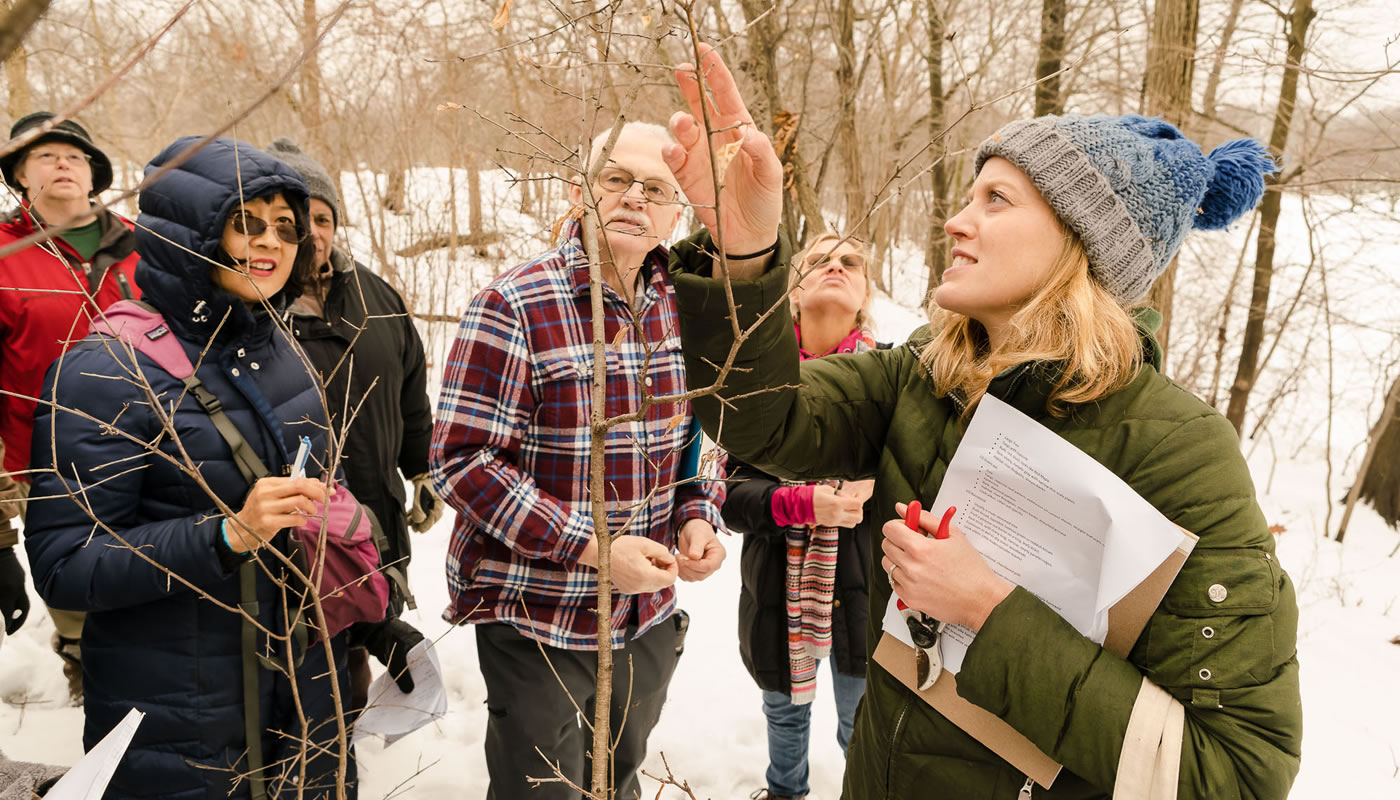Training and enrichment classes are available to volunteers who are interested in learning a new skill, taking on a stewardship leadership role, or learning more about ecological restoration, tree care and other conservation topics.
On this page:
Training & Leadership
Volunteers looking to become Ecological Stewardship leaders, or simply learn a new skill, can attend a variety of training classes provided by the Forest Preserves and/or partners.
Training Opportunities
- Chicago Wilderness Brush Pile Building and Burning
- First Aid/CPR
- Group Leadership
- Herbicide Application and Licensing
- Managing Invasive Plants
- Tree Pruning and Maintenance
Leadership Roles
- Chicago Wilderness Burn Boss
- Site Steward
- Stewardship Workday Leader
- Workday Greeter
- Licensed Herbicide Applicator
- Invasive Plant Monitor
- Seed Collection Leader
Training Documents & Resources
Volunteer Handbook
Training Manuals
- Chicago Wilderness Brush Pile Building and Burning Manual (PDF)
- Group Leadership Manual (PDF)
- Practical Herbicide Manual (PDF)
- Managing Invasives Manual (PDF)
- Brushcutter Manual (PDF)
- Chainsaw Manual (PDF)
Guidelines & Practices
- Land Management Guidelines (PDF)
- Best Management Practices – Cutting, Removing, Treating of Invasive Brush and Trees (PDF)
- Seed Source Policy & Guidelines (PDF)
- Natural and Cultural Resources Master Plan
Plant Identification
- Seed Collection Chart – Woods to Wetlands
- Seed Heads of Common Native Plants of the Tallgrass Prairie Region – Field Museum
- Tree and Shrub Identification Made Simple (PDF)

